Chaos. That’s what you can expect to find in any hotel room or AirBnB I’m staying in.
I travel for a living and if there’s one thing I can count on, it’s that as soon as I check in and my luggage hits the ground, its contents will inevitably explode across the room. Camera gear, electronics, clothing – you name it!
However, today we’re talking about a different type of chaos and how it relates to turbulent market conditions.
As investors, we’re often prepared for the good times loading up on offensive assets.
But what about tail risk strategies and hedging against severe drawdowns?
Enter the room CAOS ETF.
It’s better known as Alpha Architect Tail Risk ETF.
We’re fortunate enough to have Wes Gray with us to discuss the strategy behind this particular fund.
Without further ado, let’s turn things over to Wes to find out more!

Reviewing The Strategy Behind CAOS ETF (Alpha Architect Tail Risk ETF)
Hey guys! Here is the part where I mention I’m a travel content creator! This “The Strategy Behind The Fund” interview is entirely for entertainment purposes only. There could be considerable errors in the data I gathered. This is not financial advice. Do your own due diligence and research. Consult with a financial advisor.

These asset allocation ideas and model portfolios presented herein are purely for entertainment purposes only. This is NOT investment advice. These models are hypothetical and are intended to provide general information about potential ways to organize a portfolio based on theoretical scenarios and assumptions. They do not take into account the investment objectives, financial situation/goals, risk tolerance and/or specific needs of any particular individual.
Meet Wes Gray of Alpha Architect
After serving as a Captain in the United States Marine Corps, Dr. Gray earned an MBA and a PhD in finance from the University of Chicago where he studied under Nobel Prize Winner Eugene Fama. Next, Wes took an academic job in his wife’s hometown of Philadelphia and worked as a finance professor at Drexel University.
Dr. Gray’s interest in bridging the research gap between academia and industry led him to found Alpha Architect, an asset management firm dedicated to an impact mission of empowering investors through education. He is a contributor to multiple industry publications and regularly speaks to professional investor groups across the country.
Wes has published multiple academic papers and four books, including Embedded (Naval Institute Press, 2009), Quantitative Value (Wiley, 2012), DIY Financial Advisor (Wiley, 2015), and Quantitative Momentum (Wiley, 2016). Dr. Gray currently resides in Palmas Del Mar Puerto Rico with his wife and three children.
I had been an investor in AVOLX, when it was mutual fund, for several years. The product provided a unique tail risk exposure that didn’t have the typical return drag tied to other tail risk funds. Unfortunately, the fund was in the mutual fund wrapper and wasn’t that tax efficient.
I eventually asked Arin Risk Advisors, the brains behind the operation, if they would consider letting us convert their mutual fund into an ETF. This would, selfishly, make the fund more tax-efficient for my personal needs, but this would also make the strategy more readily available for the broader market of ETF buyers.
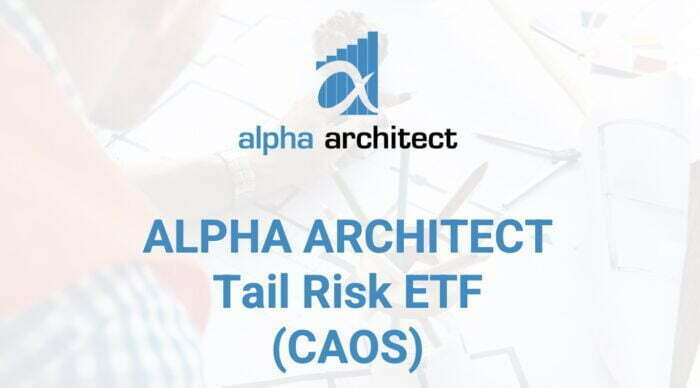

What’s The Strategy Of CAOS ETF?
For those who aren’t necessarily familiar with a “tail risk hedging” style of asset allocation, let’s first define what it is and then explain this strategy in practice by giving some clear examples.
Tail risks are generally defined as 25%+ drawdowns in the market that happen in short order – call is less than a month.
The best and most recent example is March 2020 during the COVID pandemic scare when markets blew up intra-month.
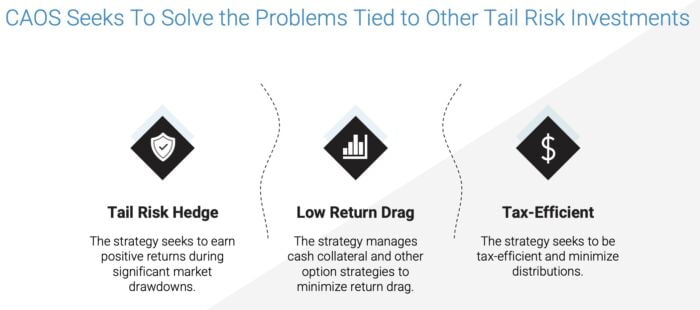
Unique Features Of Alpha Architect Tail Risk Fund CAOS ETF
Let’s go over all the unique features your fund offers so investors can better understand it.
What key exposure does it offer?
Is it static or dynamic in nature?
Is it active or passive?
Is it leveraged or not?
Is it a rules-based strategy or does it involve some discretionary inputs?
How about its fee structure?
CAOS, which is almost 10 years old at this point (AVOLX was the prior ticker when it was a mutual fund before we did a tax-free conversion into an ETF), seeks to do 3 things: hedge tail-risk events, minimize return drag, and minimize tax drag.
The fund has delivered on the first 2 objectives by 1) providing positive returns during tail risk events and 2) having positive carry of the life of the fund. And now that the vehicle is delivered via the ETF wrapper, which has additional tools to minimize tax burdens, we are confident on a go-forward basis that we can accomplish all 3 objectives.
The strategy, at its foundation, owns out of the money puts to provide the tail risk protection. This is what any tail-risk fund has to do if they want to deliver a hedge against large market drawdowns. However, the trick is figuring out how to pay for these puts without burning all your money on fire along the way (which is common among all the tail risk strategies we see on the market).
This is done by actively buying and selling different option spread strategies and capturing ‘theta’ or time decay. These option strategies help pay for the tail risk hedges, on average, over time. Or at least that is our goal – figure out how to deliver tail risk hedging, while providing positive carry along the way.
The holy grail of ‘insurance’ in some sense. The objective is not easy but has been achieved over a long period of time thus far, which gives us confidence we can continue to be successful on a go-forward basis.
CAOS ETF from Wesley Gray on Vimeo.

What Sets CAOS ETF Apart From Other Alternative Funds?
How does your fund set itself apart from other “tail risk hedging products” being offered in what is already a crowded marketplace?
What makes it unique?
As mentioned above, CAOS is almost 10 years old and delivered what amounts to the holy grail of tail risk hedging products: 1) tail risk protection during tail risk events and 2) positive carry.
The rest of the ETF marketplace, to our knowledge, cannot make these statements regarding their tail-risk products.
What Else Was Considered For CAOS ETF?
What’s something that you carefully considered adding to your fund that ultimately didn’t make it past the chopping board?
What made you decide not to include it?
This was a MF conversion with a long-term track record of success. Many of the bugs had been worked out years prior to us converting this into an ETF via the CAOS ticker.
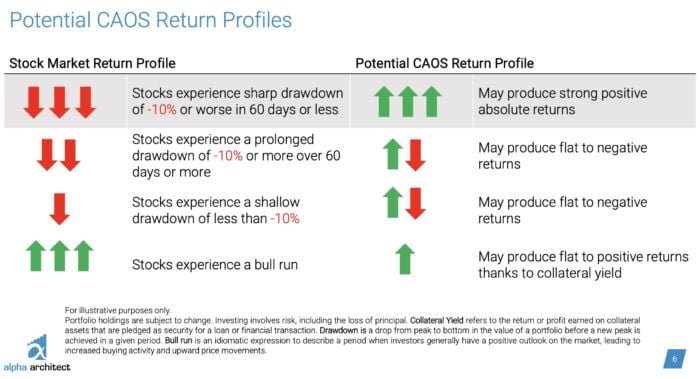

When Will CAOS ETF Perform At Its Best/Worst?
Let’s explore when your fund/strategy has performed at its best and worst historically or theoretically in backtests.
What types of market conditions or other scenarios are most favourable for this particular strategy?
On the other hand, when can investors expect this strategy to potentially struggle?
The strategy is designed to make money during violent and swift market corrections. So 25%+ drawdowns that happen within a month’s time period. And we want to deliver positive carry on the fund over the long-haul.
What the fund doesn’t do is make money all the time and protect against all losses. This would be unrealistic, obviously. So we knowingly structure the fund to have exposure to losses in the 0-20% range, especially if these are ‘bleeding bear’ market type losses that happen over an extended period. 2022 is a great example of the worst conditions for CAOS – a slow and steady bear market, but a bear market that isn’t that extreme.
In normal markets, we expect the fund to have positive returns and positive beta to the broad us stock market.

Why Should Investors Consider Alpha Architect Tail Risk Fund CAOS ETF?
If we’re assuming that an industry standard portfolio for most investors is one aligned towards low cost beta exposure to global equities and bonds, why should investors consider your fund/strategy?
The standard 60/40 stock/bond portfolio works okay when bonds go the opposite of stocks during a market panic. However, this relationship is precarious at best. A more robust portfolio needs to be better diversified and add strategies that minimize tail risk damage – this is what CAOS is designed to do.
We recommend it be used as a replacement for a portion of one’s fixed income portfolio and/or a substantial addition to a generic alternative/diversifier portfolio.
Advisors/individuals can reach out to our team to learn more about how to deploy the vehicle via https://advisors.alphaarchitect.com/
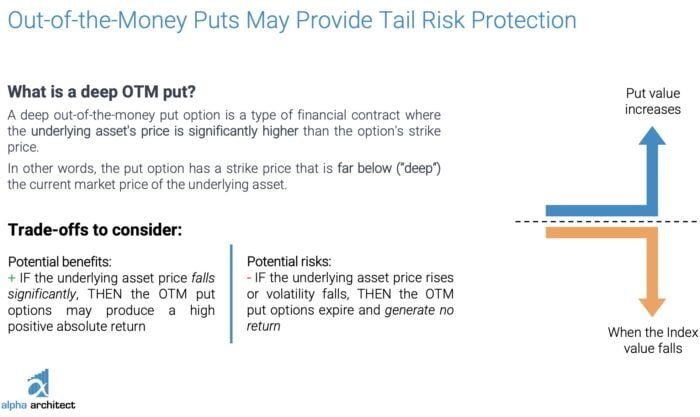

How Does CAOS ETF Fit Into A Portfolio At Large?
Let’s examine how your fund/strategy integrates into a portfolio at large.
Is it meant to be a total portfolio solution, core holding or satellite diversifier?
What are some best case usage scenarios ranging from high to low conviction allocations?
Let me explain how I use it, personally. I am essentially all-in on our core long-only global factor products – QVAL/QMOM/IVAL/IMOM. This exposes me to a lot of factor risk and a lot of beta risk. I offset this risk via 2 exposures: trend following managed futures and tail risk hedging. The managed futures are there to protect against long protracted drawdowns and the tail risk hedge, ie CAOS, is there to protect against quick/violent market drawdowns.
Now, how one sizes these positions will obviously depend on how much risk you want to hedge. I can’t answer that question without knowing a lot about the individual circumstances of the situation, but generically speaking, I think replacing a large portion of one’s no/low credit risk fixed income is a reasonable idea. High grade fixed income isn’t a great tail hedge and is generally tax-inefficient, so it strikes out on 2 fronts in my book.

The Cons of CAOS ETF
What’s the biggest point of constructive criticism you’ve received about your fund since it has launched?
Mainly that we haven’t marketed it and/or explained it that well.
We are working on that and now have an overview deck and marketing materials related to the fund. Our firm has been exceptionally busy launching new products and our marketing/distribution capabilities are scarce…but we are in the long-game with all products under the Alpha Architect umbrella, which means marketing/distribution/etc can wait.
We are in no rush to grow, we are in a rush to build and deliver what we think are unique, affordable, exposures that solve a problem in one’s portfolio.

The Pros of CAOS ETF
On the other hand, what have others praised about your fund?
The historical performance track record, which has delivered on tail risk protection, without massive return drag (actually had positive returns!)
Learn More About CAOS ETF
Q10) We’ll finish things off with an open-ended question. Is there anything that we haven’t covered yet that you’d like to mention about your fund/strategy? If not, what are some other current projects that you’re working on that investors can follow in the coming weeks/months?
Nothing comes to mind. We launch funds very rarely and typically spend 3+yrs on product development. As of now, we have no new ideas on the horizon, but that could change.
CAOS ETF — 12 Essential FAQs on the Alpha Architect Tail Risk ETF (CAOS)
1) What is CAOS ETF in one sentence?
CAOS (Alpha Architect Tail Risk ETF) is a rules-driven tail-risk hedge that aims to pay off in violent, fast equity selloffs while targeting low ongoing return drag and tax efficiency via the ETF wrapper.
2) What does “tail risk” mean here?
“Tail” refers to rapid, severe drawdowns (think ~25%+ in ~a month), like the March 2020 COVID collapse—events where traditional diversification often fails and explicit hedges can shine.
3) What’s the core strategy CAOS uses to hedge?
The fund owns out-of-the-money (OTM) equity puts to create convex payoff in crashes, and actively trades option spreads to harvest theta (time decay) that helps finance the puts, seeking positive carry over the long run.
4) How is CAOS different from many tail-risk products?
CAOS is designed to do two hard things at once:
Hedge tail events (positive convexity in crashes), and
Minimize return drag by offsetting premium spend via option income strategies—an approach that historically has produced positive carry across the fund’s life (inclusive of the predecessor mutual fund).
5) Is CAOS static or dynamic? Rules-based or discretionary?
The foundation (long OTM puts) is persistent, while spread selection and management are actively implemented to capture carry and fund the hedge. The process is rules-informed and manager-directed rather than purely passive.
6) Does CAOS use leverage?
The fund isn’t designed to lever equity beta. Options are notional-efficient instruments, but the intent is tail protection + carry, not magnifying market exposure.
7) When might CAOS perform best—and worst?
Best: During swift, violent selloffs (sharp equity crashes).
Worst: In slow, “bleeding” bear markets (e.g., 2022-style), where losses accrue gradually and crash convexity is less rewarded; also, strong bull markets can see the hedge lag broad equities.
8) What does “positive carry” mean in this context?
Many hedges cost money over time; CAOS seeks to offset (or exceed) that cost by systematically selling option spreads and capturing time decay, aiming for net positive carry while keeping crash insurance in place.
9) How should investors use CAOS in a portfolio?
As a satellite hedge or part of an alternatives/diversifiers sleeve, often paired with trend-following managed futures (to address long, grinding drawdowns) while CAOS targets fast crash protection.
10) Where might funding for CAOS come from?
Some allocators replace a portion of high-grade/low-credit-risk fixed income (which may be tax-inefficient and not a reliable crash hedge) or carve out from an existing alts bucket.
11) What are the main trade-offs and risks?
It will not profit in all down markets—especially gradual drawdowns.
Option-market dynamics (volatility, skew, liquidity) affect hedge cost/benefit.
Complexity: understanding option carry and convexity requires education.
12) Why consider CAOS versus a basic 60/40?
When stocks and bonds fall together, a classic 60/40 can struggle. CAOS adds an explicit, convex hedge intended to limit tail-risk damage, with an ETF structure for access, liquidity, and potential tax efficiency.
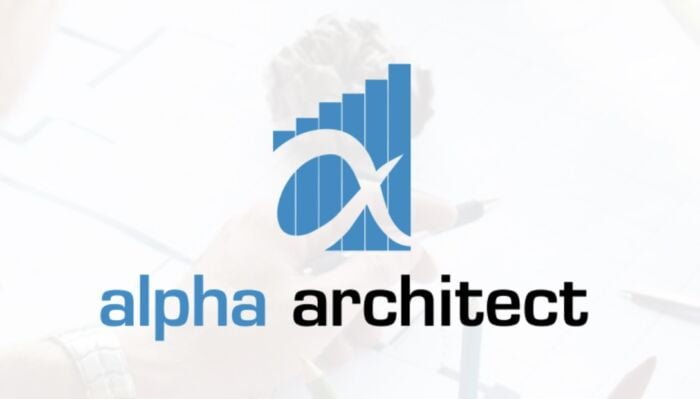
Connect With Alpha Architect
Thanks so much for taking part in the “The Strategy Behind The Fund” series! How can others connect with you on social media and other platforms that you run?
Twitter: Twitter.com/alphaarchitect
Advisor Site: https://advisors.alphaarchitect.com/
ETF Site: https://etfsite.alphaarchitect.com/caos/
Video: https://vimeo.com/816988039
Nomadic Samuel Final Thoughts
I want to personally thank Wes Gray for taking the time to participate in the “The Strategy Behind The Fund” series by contributing thoughtful answers to all of the questions!
If you’ve read this article and would like to have your fund featured, feel free to reach out to nomadicsamuel at gmail dot com.
That’s all I’ve got!
Ciao for now!
Important Information
Comprehensive Investment Disclaimer:
All content provided on this website (including but not limited to portfolio ideas, fund analyses, investment strategies, commentary on market conditions, and discussions regarding leverage) is strictly for educational, informational, and illustrative purposes only. The information does not constitute financial, investment, tax, accounting, or legal advice. Opinions, strategies, and ideas presented herein represent personal perspectives, are based on independent research and publicly available information, and do not necessarily reflect the views or official positions of any third-party organizations, institutions, or affiliates.
Investing in financial markets inherently carries substantial risks, including but not limited to market volatility, economic uncertainties, geopolitical developments, and liquidity risks. You must be fully aware that there is always the potential for partial or total loss of your principal investment. Additionally, the use of leverage or leveraged financial products significantly increases risk exposure by amplifying both potential gains and potential losses, and thus is not appropriate or advisable for all investors. Using leverage may result in losing more than your initial invested capital, incurring margin calls, experiencing substantial interest costs, or suffering severe financial distress.
Past performance indicators, including historical data, backtesting results, and hypothetical scenarios, should never be viewed as guarantees or reliable predictions of future performance. Any examples provided are purely hypothetical and intended only for illustration purposes. Performance benchmarks, such as market indexes mentioned on this site, are theoretical and are not directly investable. While diligent efforts are made to provide accurate and current information, “Picture Perfect Portfolios” does not warrant, represent, or guarantee the accuracy, completeness, or timeliness of any information provided. Errors, inaccuracies, or outdated information may exist.
Users of this website are strongly encouraged to independently verify all information, conduct comprehensive research and due diligence, and engage with qualified financial, investment, tax, or legal professionals before making any investment or financial decisions. The responsibility for making informed investment decisions rests entirely with the individual. “Picture Perfect Portfolios” explicitly disclaims all liability for any direct, indirect, incidental, special, consequential, or other losses or damages incurred, financial or otherwise, arising out of reliance upon, or use of, any content or information presented on this website.
By accessing, reading, and utilizing the content on this website, you expressly acknowledge, understand, accept, and agree to abide by these terms and conditions. Please consult the full and detailed disclaimer available elsewhere on this website for further clarification and additional important disclosures. Read the complete disclaimer here.





